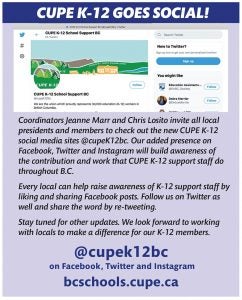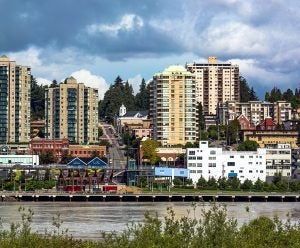We have been getting questions from members about an EA Standards of Practice Working Group Survey. This is not a CUPE working group, nor has CUPE endorsed the work of this working group. CUPE has had no part in this survey.
This bulletin explains the roles that CUPE fulfils for members in K-12, and specifically what that means for EAs.
CUPE National Reps, Specialist Reps and Sector Co-ordinators support locals in bargaining and enforcing collective agreements.
CUPE continues to make gains for Education Assistants
Provincial Agreement
Once the K-12 Presidents Council ratifies the provincial framework agreement (PFA), it forms part of local agreements that K-12 locals negotiate with their respective school boards.
All K-12 members, including Education Assistants, receive 2 percent annual wage and benefit increases. These will continue until the collective agreement expires in 2022.
The PFA also includes a process to help reduce workplace violence—a priority for EAs and for CUPE. Targeted funding specific to EAs was negotiated and a Provincial Joint Job
Evaluation Project is underway. This is one step toward getting consistency of job descriptions and compensation.
Democracy in action
CUPE takes direction from members at convention; through member surveys; from ongoing communication with CUPE’s autonomous K-12 locals; and through the Presidents Council.
A resolution passed at convention called for CUPE BC to lobby the provincial government to implement a system of recognized credentials and qualifications to regulate training for EAs.
The K-12 Presidents Council, CUPE BC and CUPE National are continuing this work through discussions with government and our presence on negotiated provincial committees.
CUPE BC is currently advocating for the creation of more spaces to train EAs in public post-secondary institutions.
Issues and Advocacy
Because standards of practice and training vary widely between districts—creating unfair differences in qualifications for similar employment and barriers for members to transfer employment to another district— over 86 per cent of EAs would like to see training standardized in their field.
EAs deserve to have whole jobs. The K-12 Presidents Council and CUPE have consistently lobbied and negotiated with government and the employers to increase funding to provide EAs with full-time hours.
As the number of children who need enhanced support has increased in schools, CUPE BC has lobbied for more direct support to those students.
In addition to bargaining support and ensuring contracts are followed, CUPE advocates, lobbies and recommends policy changes. CUPE has always championed inclusive education.
We will update you about our ongoing work through bulletins at bcschools.cupe.ca and via social media @cupek12bc on Facebook, Twitter and Instagram.
CUPE ROLES
K-12 Presidents Council
The K-12 Presidents Council represents more than 30,000 K-12 support workers in B.C. The Council’s elected bargaining committee negotiates a provincial framework agreement with BCPSEA that covers common issues and wage increases.
CUPE BC
CUPE BC acts as a political voice for CUPE locals. The Division has consistently and strongly advocated for additional K-12 funding for decades, and has specifically called for improvements for EAs including standardized training and increased hours of work. CUPE BC does not have a seat on the K-12 Presidents Council and does not bargain or negotiate.
CUPE National
CUPE National and its chartered locals represent K-12 support workers including Education Assistants, School Secretaries, Custodians, Indigenous Support Workers, IT Workers, Trades and Maintenance Workers, Bus Drivers, and Strong Start Facilitators. The National provides bargaining support to locals and helps ensure contracts are followed.
View PDF.


